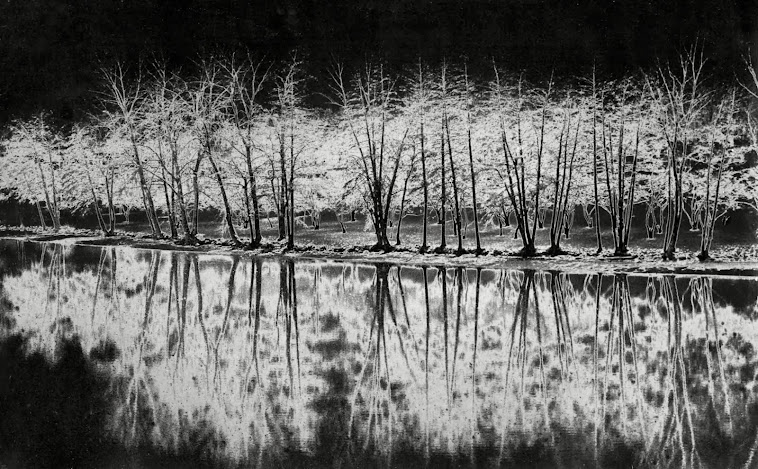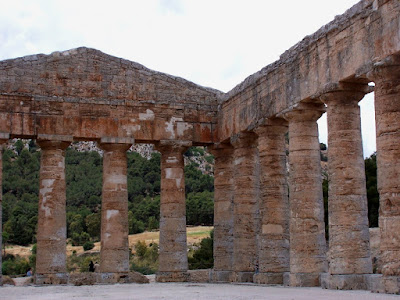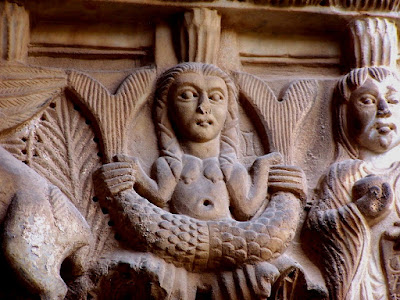We departed Selinunte and traveled southeast along the Mediterranean coast to Agrigento (founded in 580 BC). Here, too, in the Valley of Temples, there are the remains of multiple temples [dedicated to Hera, Concord, Heracles and Zeus]. As we entered the valley, our first encounter was with the fairly well preserved Hera Temple (another example of 5th century BC. Doric style, with fluted columns).
Only a short walk further was the 5th century BC. Temple of Concord. It is one of the best preserved Doric temples in all the world thanks partly to its conversion and use as a Christian basilica in the 4th century AD. It was undergoing renovations during our visit, as you can see from the scaffolding.
Another short walk took us to the Temple of Heracles (Hercules).
At the end of the path stands the Temple of Castor and Pollux. It consists of only 4 Doric columns that were restored in the 19th century. This is the image emblematic of Agrigento.

Welcome/Willkommen!
Hello and welcome. Hope you enjoy the images I have posted. Please do not reproduce them without my permission. Most are available as note/greeting cards or as prints/enlargements. Thank you for visiting my site and your comments.
Many have asked about the Header image above, which I named 'Eerie Genny'. It was originally shot with film [taken on the shore of the Genesee River near the Univ. of Rochester]. During the darkroom development, I flashed a light above the tray. The process, known as 'solarization', produces eerie, ghostlike effects; some have mistaken this image as an infra-red photo. Some 35+ years later, I scanned and digitized the print, and did a little modern day editing, and, voila.
« I confirm the subscription of this blog to the Paperblog service under the username shattman ».
Many have asked about the Header image above, which I named 'Eerie Genny'. It was originally shot with film [taken on the shore of the Genesee River near the Univ. of Rochester]. During the darkroom development, I flashed a light above the tray. The process, known as 'solarization', produces eerie, ghostlike effects; some have mistaken this image as an infra-red photo. Some 35+ years later, I scanned and digitized the print, and did a little modern day editing, and, voila.
« I confirm the subscription of this blog to the Paperblog service under the username shattman ».
Thursday, March 29, 2018
Thursday, March 22, 2018
Sicily 5: Erice & Selinunte [Sky Watch Friday]
After leaving Segesta, we took a short ‘hop’ to the mountaintop town of Erice, where there was an awesome view down to the Gulf of Bonagia. I remember it was quite cloudy, chilly and windy. As fellow tour members were boarding the bus for the return to our hotel, I was determined to wait for an opening in the fast moving clouds for a shot. I stood my ground and got lucky.
The next day's outing was to the ancient port of Selinunte, which is arguably Sicily’s top archeological site. Founded in the 7th century BC, it became a powerful city with flourishing trade, and, hence, a rival of Segesta. Excavations have unearthed 8 temples in varying degrees of ruin. Temple E (partially rebuilt in the 1960s) is considered one of the finest examples of Doric architecture. Note that here the columns are fluted; i.e. instead of being completely rounded, they have vertical, curved channels
Just before we arrived in Selinunte, we made a stop at a convenience store, where the proprietor (Nick) proudly displayed a to scale model he had made of Temple E.
As we made our way to the next temple, we encountered great stone segments that went into building columns. Here you can see the fluted edges even more clearly .
The next day's outing was to the ancient port of Selinunte, which is arguably Sicily’s top archeological site. Founded in the 7th century BC, it became a powerful city with flourishing trade, and, hence, a rival of Segesta. Excavations have unearthed 8 temples in varying degrees of ruin. Temple E (partially rebuilt in the 1960s) is considered one of the finest examples of Doric architecture. Note that here the columns are fluted; i.e. instead of being completely rounded, they have vertical, curved channels
Just before we arrived in Selinunte, we made a stop at a convenience store, where the proprietor (Nick) proudly displayed a to scale model he had made of Temple E.
As we made our way to the next temple, we encountered great stone segments that went into building columns. Here you can see the fluted edges even more clearly .
Temple C, dedicated to Apollo, was the largest and oldest temple on the Acropolis.
Thursday, March 15, 2018
Sicily 4: Segesta [Sky Watch Friday]
On our 4th day, we departed Palermo by bus and headed west to Trapani, on the Mediterranean Sea. That night, I managed to get a few decent shots of the sunset from our hotel restaurant window.
We would spend two nights here and take some bus excursions. The first one was to Segesta, site of a magnificent Doric temple and theater (dating back to the 5th century BC). They are situated out in rolling green hills, albeit separated by a considerable distance. The image below shows the surrounding landscape.
We worked our way down to the temple entrance. Yes, the capitals were in classical Doric style, and the columns were unfluted. Examples of the more modern fluted columns will be shown in future postings.
The well preserved columns (including the capitals) are ca. 30 feet high;, with14 on the long side and 6 each along the short side of the temple.
The semi-circular theater was built into the side of a hill, Monte Barbaro. Its acoustics are phenomenal; e.g. a softly spoken word at ground level, within the semi-circular area, can easily be heard in the top row of seating. Consequently, ancient Greek plays are performed here every summer.
We would spend two nights here and take some bus excursions. The first one was to Segesta, site of a magnificent Doric temple and theater (dating back to the 5th century BC). They are situated out in rolling green hills, albeit separated by a considerable distance. The image below shows the surrounding landscape.
As we came over a hill crest, there was the temple, an awe-inspiring sight.
We worked our way down to the temple entrance. Yes, the capitals were in classical Doric style, and the columns were unfluted. Examples of the more modern fluted columns will be shown in future postings.
The well preserved columns (including the capitals) are ca. 30 feet high;, with14 on the long side and 6 each along the short side of the temple.
The semi-circular theater was built into the side of a hill, Monte Barbaro. Its acoustics are phenomenal; e.g. a softly spoken word at ground level, within the semi-circular area, can easily be heard in the top row of seating. Consequently, ancient Greek plays are performed here every summer.
Thursday, March 8, 2018
Sicily 3: Cefalù [Sky Watch Friday]
Another excursion was to the medieval coastal town Cefalù, with its landmark 12th century cathedral. As we approached the coast, we could see the town in the distance. This was shot through the bus window.
Prior to reaching the town, we disembarked and made the rest of the way on foot. This afforded us some interesting perspectives.
Once in town, we took lunch at a local restaurant near the beach. From our seats in the shade of a table umbrella, we were able to sit and people-watch.
Cefalù's major attraction is its cathedral. Started in 1131 during the reign of Roger II, it was not completed during his lifetime. The apse, vault and presbytery walls are all covered with mosaics executed by Byzantine craftsmen in 1148. The most striking figure is that of Christ above Mary and four archangels.
Prior to reaching the town, we disembarked and made the rest of the way on foot. This afforded us some interesting perspectives.
Once in town, we took lunch at a local restaurant near the beach. From our seats in the shade of a table umbrella, we were able to sit and people-watch.
Cefalù's major attraction is its cathedral. Started in 1131 during the reign of Roger II, it was not completed during his lifetime. The apse, vault and presbytery walls are all covered with mosaics executed by Byzantine craftsmen in 1148. The most striking figure is that of Christ above Mary and four archangels.
Thursday, March 1, 2018
Sicily 2: Palermo 2 [Sky Watch Friday]
The exterior of the apse has interlaced marble and tufa arches characteristic of the height of Norman decoration.
The Cloister below was another masterpiece of Norman art. It contains 228 variously decorated small double columns with Arab style arches and intricate capitals.
Subscribe to:
Comments (Atom)





































